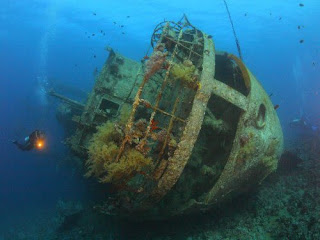Philippines is an archipelago of 7,017 islands and the
common means of travel from one island to another is by sea and one issue that
needs to be stress is the safety and quality of maritime travel in the country.
Philippines is known to the world as one of the worst country in maritime
travel. The governments of United
States, United Kingdom, Australia and Canada issued an advice to its citizens
not to take interisland ferries in the Philippines because it is overloaded,
substandard and lack of necessary lifesaving equipment, are not adequately
maintained and have incomplete passenger manifest.
In terms of significant loss of lives in the sea accidents-
the Philippines holds the world record for the worst peacetime maritime
disaster in history, With an estimated loss of 4000 lives, the 24 year old Dona
Paz collided with the tanker Vector in Tablas Strait in 1987. The disaster became
an imperative to modernize the Philippines Maritime travel, replacing the old,
substandard vessels that are unsafe.
Due to lack of international classification, standard and
age, the current aging fleet of interisland vessels are impossible to
effectively insure and pose a threat to human life.
Two main circulars issued by MARINA (Maritime Industry
Authority) will set the minimum age, quality and class standards for passenger
and RO-RO passengers will not only improve the safety of life at sea for
interisland travel but also open routes to market players who are better to
meet the challenge of modernization.
There are two main interisland routes plying in maritime
travel- the Passenger vessels and the Ro-Ro (Roll on, Roll Off) vessels. The
Passenger are big vessels routing in open seas and usually transporting from
and to major cities. The Ro-Ro vessels are smaller and transporting people and
cargos across the countries neighboring islands and it has been a backbone of
countries interisland trade and commerce.
Most Ro-Ro vessels in the Philippines are substandard, I’ll
maintained and very old with an average of 30 years old. Most of them are
imported used vessels from Japan. In Japan, once a Ro-Ro reaches 20 years, it
is no longer allowed to be used on trading and travel. So, these retired
Ro-Ro’s are usually sold to Philippines, Indonesia and some Asian countries,
therefore, the majority of the Ro-Ro in the Philippines are above 20 years old.
They are usually repaired and modified to add more passenger capacity making it
unsafe due to overloading.
Because of these, Marina has issues 2 major circulars to
ensure safety and modernization of maritime travel.
The first would require that no secondhand Ro-Ro vessel of 5,000 gross tonnage and below will be imported unless it is 15 years old or below, and that it be fully classified by an IACS member.
The first would require that no secondhand Ro-Ro vessel of 5,000 gross tonnage and below will be imported unless it is 15 years old or below, and that it be fully classified by an IACS member.
The second circular would require that within five years, or
by Dec. 31, 2019, Ro-Ros of 5,000 gross
tonnage and below, may be allowed to operate provided:
They are not more than 35 years old
Fully classed
With Protection and Indemnity (P and I) insurance, a
third-party insurance to cover oil spill, collision of vessels, death and
removal of wreckage.
During the period, no major alterations on any Ro-Ro vessel
will be allowed unless: (a) it is
approved by and under the supervision of an IACS member; and (b)
class-maintained throughout. Marina can continue to use its supervisory powers
by conducting periodic inspections of the Ro-Ro vessels and their crew.
And MARINA ensures the compliance of these circulars, by
increasing frequency and constantly doing survey. With these circulars in place
and provided, it has remain strict in its implementation, now we can foresee
that the old Ro-Ro will be scrapped and replaced as it will be uneconomical to
use them. Shipbuilding is now already expected for the next five years. It is
expected that the modernization will be completed in the next 6-7 years, and
the general public can expect a comfortable and safe interisland travel.








